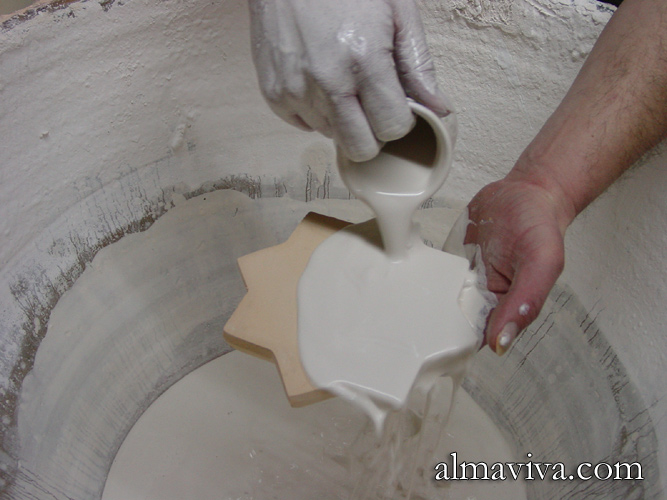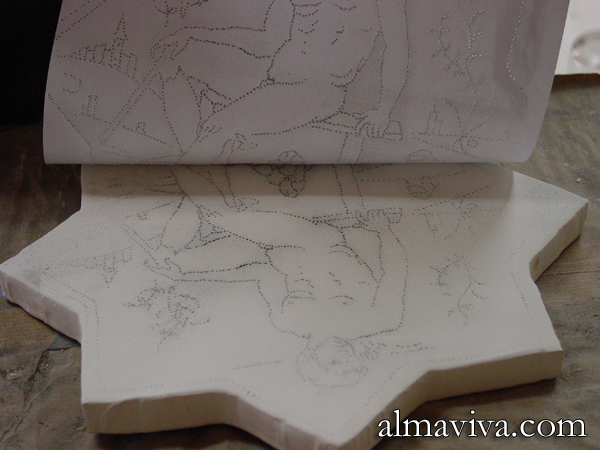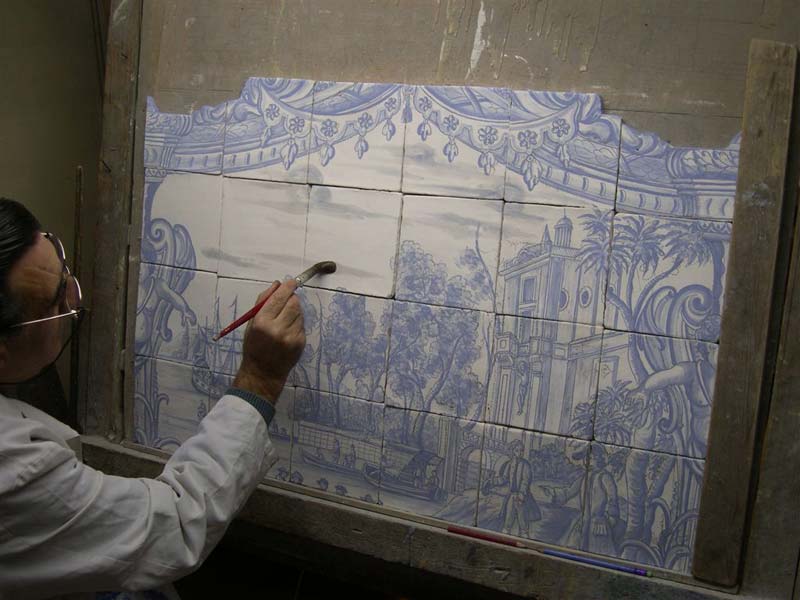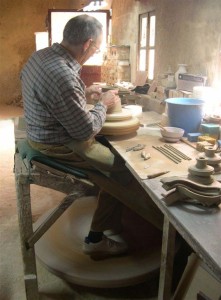 Our atelier employs the same manufacturing ceramic techniques and materials used by Renaissance artisans.
Our atelier employs the same manufacturing ceramic techniques and materials used by Renaissance artisans.
Whether intended for tiles or art-pieces, the clay is first kneaded by hand. Tiles are made individually by compacting the clay with the palm of the hand into a plaster mould. Art-pieces are made with either ancient moulds or on the potter's wheel (see picture). Depending on their thickness, tiles and art-pieces dry for several weeks before the first firing. Thereafter they are hand-glazed. We use a ladle to cover one side of the tiles with enamel; we dip art-pieces into an enamel bath.
Enregistrer
Enregistrer
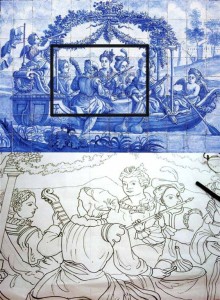 Decorations are hand-painted unto the raw unbaked glaze. The enamel and the pigments are then fired together for about 12 hours at a high temperature, about 1,000° C (1,820° F). At this temperature, colours merge into the glaze. This technique is called "grand feu" in French (“high fire”) and "underglaze" colours in English. It is the only technique we use.
Decorations are hand-painted unto the raw unbaked glaze. The enamel and the pigments are then fired together for about 12 hours at a high temperature, about 1,000° C (1,820° F). At this temperature, colours merge into the glaze. This technique is called "grand feu" in French (“high fire”) and "underglaze" colours in English. It is the only technique we use.
Enregistrer
We add decoration to pieces in the same manner employed by fresco painters. We first use pierced paper stencils and charcoal dust to transfer the outlines of the design to the pieces (see picture). We then apply the pigments, varying the pressure on the brush to produce either thin outlines or broad areas of colour. The raw and milky-white surface of enamel instantly absorbs every stroke. Corrections are impossible. The decor painted and the background glaze are fired altogether. This process is known as underglaze decoration.
On the contrary, so-called "over glaze" colours (which we do not use) are painted upon an already-fired glaze. A third firing, at a lower temperature, fixes the colours; because they are at the surface of the glaze, they are much less resistant to abrasion. This technique, called "petit feu" in French (“low fire”), was not used until the 18th century.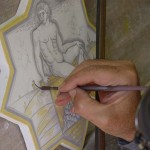
Final colours are the result of the firing of metal oxides. Only 5 oxides survive a high- temperature fire. The palette thus has five ranges of colours: blue (cobalt), green (copper), yellow (antimony), ochre (iron) and brown, black or aubergine (manganese). As we only use natural oxides, our ceramics have the same organic nuances of colour as ancient pieces.
The hand of the artisan and fire leave their own unpredictable marks at every step of this long process; each ceramic piece is truly unique.
Enregistrer
Enregistrer






